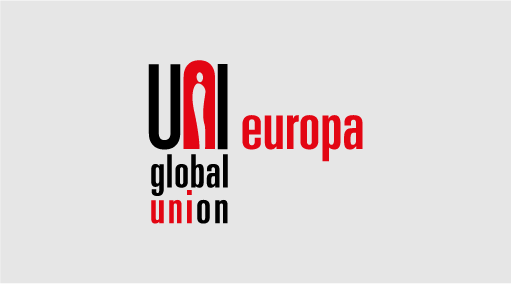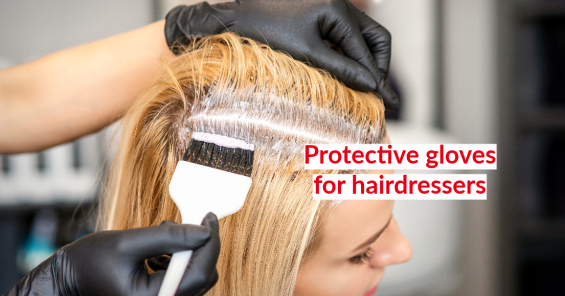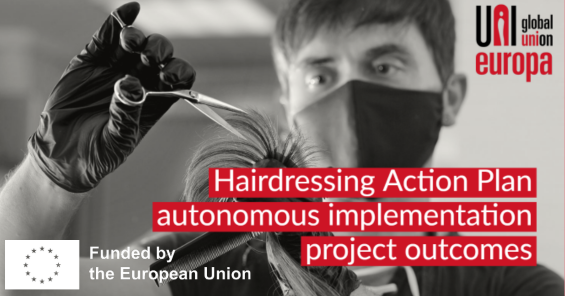The objective of the project was to enhance the capacity of the social partners at European and national levels, to strengthen the effects of synergy, to improve the results of European social dialogue and to reinforce the impact and visibility of the dedicated European Social Dialogue Committee.
The European social partners wanted to raise awareness on the signed European Framework Agreement on Occupational Health and Safety in the Hairdressing sector, by focusing strongly on ergonomics in the sector and the prevention/protection from Musculoskeletal Disorders (MSDs). Additional objectives were to develop targeted recommendations and a dissemination strategy around the project results. The goal was to adopt a participative and targeted approach (employees and employers) to the prevention of MSDs and a consensus-based strategy to lighten the onus of MSD in the hairdressing sector. Particular attention was placed on the development of a comprehensive dissemination strategy and participation in a dialogue with the relevant authorities and stakeholders (e.g. to seek opportunities for cooperation with the manufacturers, educational institutions and other relevant competent insurance institutions).
To achieve the above-listed overall aims, the following actions were considered:
- to compile and assess the existing knowledge on hairdressers’ health and work-related risks around MSDs;
- to raise awareness of risks resulting from ergonomically poor workstations, equipment, postures or work organisation, information specific to target-groups; disseminate good practices, help build consensus and confidence;
- to establish common themes of action and synergies by strengthening the dialogue between the hairdressing sector and the manufacturing industry;
- to draw up recommendations for uniform EU standards and measures for manufacturers to contribute to the redesign of professional equipment;
- to assess the OiRA tool for the hairdressing sector and ascertain whether it meets the needs of users around MSDs;
- to develop joint opinions and a joint declaration concerning ergonomic measures in the hairdressing sector.
Activities and deliverables
The project lasted 24 months. The project enabled the staging of three workshops in three EU countries bringing together social partner organisations from the hairdressing sector, cross-sector umbrella employer’ organisations and trade unions, as well as national authorities and experts who specialise in OSH aspects in hairdressing and ergonomics:
1st Workshop: Hamburg, Germany
2nd Workshop: Paris, France
3rd Workshop: Brussels, Belgium
The preparatory phase enabled the Project Steering Group to prepare and organise the three Workshops as well as engaging the research team that carried out the scientific literature review and data analysis. The project partners staged a literature review on (1) work-related risk factors and health conditions among hairdressers and (2) work-related ergonomic implementation strategies (e.g. scientific studies and projects to ensure good practices in OSH instructions/training programmes in the Member States). Additional considerations were explored during this phase notably the possibilities for ergonomic standardisation of Hairdresser equipment as well as consideration around the dissemination of the project deliverables.
The first workshop focused on the presentation and discussion of the current state of research and the opinions of experts who specialise in ergonomics in the hairdressing sector or the prevention of MSD in the workplace, and to map out existing national prevention strategies. This workshop also included a discussion with relevant stakeholders on the status of OSH in the hairdressing sector. The Workshop also gathered information on absenteeism due to illness, occupational diseases and work-related injuries in the sector. The findings enabled the project partners to pursue the project implementation and develop recommendations with a strong emphasis on ergonomics that correspond in particular to employee needs and practical requirements.
The second workshop focused on an active exchange of information about specific ergonomic requirements for equipment/furniture for hairdressers and customers resulting from ergonomic studies and current regulations and standards for furniture producers and outfitters. This dialogue served to ascertain whether the hairdressing equipment/furniture meets the latest ergonomic standards. The dialogue between manufacturers and the hairdressing sector served to ascertain the degree of interest in elaborating EU standards on ergonomically-proof hairdressing equipment. A discussion was held on the operative implementation and handling instructions of the OiRA tool or other instruments used by the national partners. The findings enabled the project partners to pursue the project implementation and develop recommendations with a strong emphasis on ergonomics that correspond in particular to employer needs and practical requirements.
The third workshop included a discussion on potential pathways and identification of stakeholders for the dissemination of target group-specific sets of recommendations on MSDs prevention and protection. Based on the findings and expertise of the previous two workshops, a joint target group-specific set of recommendations was finalised. The Project enabled the development of a number of deliverables per stakeholder group. Representatives from relevant organisations and speakers were invited, e.g. from European cross-sector trade union federations (ETUC), employer organisations (UEAMPE) and EU institutions. In this meeting a joint declaration on ergonomics in hairdressing and its contribution to occupational health and safety was adopted and available in different languages.
The ERGOHair Project results are presented on the dedicated website: www.ergohair.eu
The Medical Reference Document (MRD) ‘Musculoskeletal Health of Hairdressers –Protection of Occupational Health and Safety at Workplace- Medical Reference Document’, April 2019, 66 p. provides guidelines listing the criteria which should be taken into account when developing a healthy work environment from an ergonomic perspective. The MRD contains 5 chapters: the hairdressing sector in Europe, the musculoskeletal system, scoping review on musculoskeletal health of hairdressers, outcomes of the workshops in Hamburg and Paris. The MRD is available in English EN Medical Reference Document_A4_EN_web_NEU and in German DE Broschuere_ergoHair_A4_DE_web as a web document and in French and Dutch as word documents, which can be downloaded from the website.
Furthermore, a good practice guide was also developed.
The Declaration of Brussels 4/4/2019, a joint social partner statement, contains the commitments for the promotion of better ergonomics in the sector. By solemnly signing this document during the 3rd workshop, the European Social Partners formalised their commitments for the future. This declaration is also aimed towards the national social partners. The Declaration consists of a preamble, following by a common statement (8 points) of the Social Partners. The Declaration is available in English ENG Declaration of Brussels, French FR Déclaration de Bruxelles and Dutch NL Verklaring van Brussel, and it can be consulted on the Ergohair website https://www.ergohair.eu/ and on the mini-website http://www.ergoforhairdressers.eu.
A dissemination strategy with recommendations for each specific target audience was developed based on the concrete recommendations of the experts, given during workshop 1 and 2. For example, 5 leaflets are available, called ‘Cut to the Chase’ ERGONOMIC TIPS FOR respectively employers ERGOHAIR – EMPLOYERS 2019-ENG, employees ERGOHAIR – EMPLOYEES 2019-ENG, schools and training centres ERGOHAIR – EDUCATION 2019-ENG, suppliers and others (external services for prevention and protection at work, insurances, social security and health care) ERGOHAIR – SUPPLIERS 2019-ENG ERGOHAIR BXL-Others 2019-ENG-HR-print. The leaflets are parts of the communication campaign, and they can be downloaded on the mini-website www.ergoforhairdressers.eu in EN, NL and FR.
Through a short test on the mini-website (http://www.ergoforhairdressers.eu/), which encourages reflection on personal situations, visitors can order the devised and re-usable calendar . The calendar is highly visual and contains 9 themes, tips and testimonies. By using the calendar, the message is repeated daily. Coasters, posters and an animated video to spread through social media, mailings, magazines, and events were also developed. Additional material can be retrieved on the website. ERGOHAIR – PALM-TO-PALM TECHNIQUE 2019-ENG ERGOHAIR – GOOD PRACTICE EXAMPLES 2019-ENG


